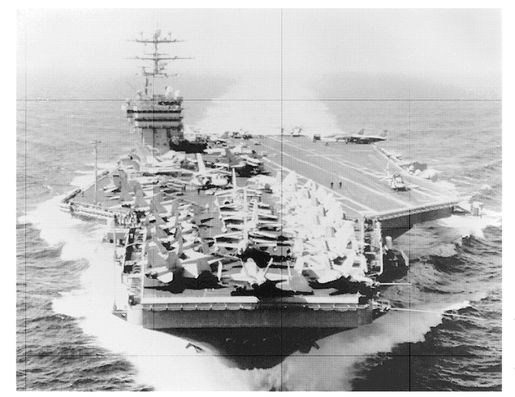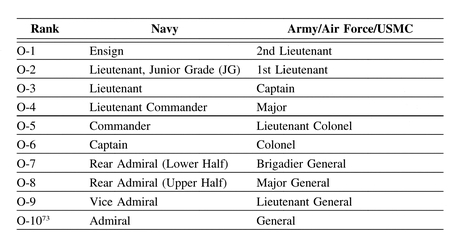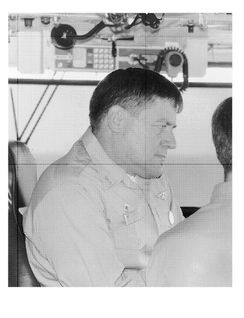Carrier (1999) (43 page)
Authors: Tom - Nf Clancy

Current U.S. national military strategy calls for a force structure sufficient to deal with two “major regional contingencies” (small wars or big crises) plus one “complex humanitarian emergency” (natural disaster, epidemic, famine, refugee migration, etc.). You might think that a dozen CVBGs would be enough to handle all that. Unfortunately, the unforgiving demands of complex machinery and the natural limits of human endurance set boundaries that make a dozen carrier groups just barely sufficient to maintain two or three carriers on distant deployment at any one time. Let me explain.
When you build a warship like an aircraft carrier, it is not available for deployment overseas all the time. Warships require regular maintenance and upgrades. Thus, in the forty-five-year planned life of an aircraft carrier, it will spend as much as a fifth of its time in docks and yards being repaired and maintained. For example, for every year the ship is in service, two or three months are spent on minor upgrades and maintenance to keep the ship going between “deep” overhauls (when the warship is brought into dry dock for major work). These major overhauls are done every five years or so, take from eight to twelve months to complete, and include everything from repainting the hull to upgrading the living quarters and combat systems. Additionally, nuclear-powered carriers are periodically out of service for a three-year refueling, an intricate surgery (with meticulous attention to radiation safety) that requires cutting great holes through decks and bulkheads and then welding everything back together. All this means that a warship is only available to sail about three years out of every five.
The crew, also, requires its own “overhaul,” for the multitude of combat skills embodied in the battle group’s ten thousand sailors, marines, and aviators are “perishable.” If skills are not taught, practiced, and tested regularly, the combat potential of a ship or air group rapidly deteriorates, even when deployed into a forward area. So a battle group must be assembled and “worked up” for almost six months before each six-month deployment.
Finally, and no less important, today’s sailors and marines demand and deserve a personal life. People are not robots; they need rest, family relationships, and opportunities to advance personally and professionally. Warship crews need some portion of their service careers at or near their home ports. This human factor is the first casualty when politicians deny pay increases and hardship bonuses, or extend emergency deployments to extreme lengths. Because relatively few of today’s national leaders have the personal experience of long military deployments, the sea services have especially suffered. To remedy this problem, Admiral Johnson has instituted a six-month “portal to portal” deployment policy. That is, the Navy has promised that sailors will spend 50% of their time in home port.
Navy planners struggle constantly to build schedules that maximize the number of carrier groups available for deployment, while providing the best quality of life for embarked sailors and marines. Given a carrier force level of a dozen units, it works out something like this:
•
Deep Overhaul/Nuclear Refueling
—Two or three units at a time. Currently, there are three shipyards (Bremerton, Washington; Norfolk, Virginia; and Newport News Shipbuilding) capable of doing this intensive job, which essentially “zeros the mileage” on a ship.
Deep Overhaul/Nuclear Refueling
—Two or three units at a time. Currently, there are three shipyards (Bremerton, Washington; Norfolk, Virginia; and Newport News Shipbuilding) capable of doing this intensive job, which essentially “zeros the mileage” on a ship.
•
Yearly/Periodic Maintenance
—Two or three additional carriers are usually conducting yearly/periodic maintenance, which is mainly done dockside at the ship’s home port.
Yearly/Periodic Maintenance
—Two or three additional carriers are usually conducting yearly/periodic maintenance, which is mainly done dockside at the ship’s home port.
•
Deployment/Workup
Cycle—The remaining six or seven carriers are on an eighteen-month cycle, broken into the following phases:
Deployment/Workup
Cycle—The remaining six or seven carriers are on an eighteen-month cycle, broken into the following phases:
—
Leave/Unit Training Period
—The first six months of the cycle are devoted to resting crews coming off deployment, with leave and training time. Some individual ship or unit training is also conducted then.
Leave/Unit Training Period
—The first six months of the cycle are devoted to resting crews coming off deployment, with leave and training time. Some individual ship or unit training is also conducted then.
—Workup Period
—The second six months of the cycle are designed to refresh unit combat skills, conduct combine training, and validate the unit’s ability to conduct joint operations prior to deployment.
—The second six months of the cycle are designed to refresh unit combat skills, conduct combine training, and validate the unit’s ability to conduct joint operations prior to deployment.
•
Deployment
—Designed to be six months long, this is the period where the combined battle group is packaged and forward-deployed for actual operations.
Deployment
—Designed to be six months long, this is the period where the combined battle group is packaged and forward-deployed for actual operations.
Assuming that this cycle is not interrupted by a major regional contingency, two or three CVBGs can be forward-deployed at any given time. There is always one from the East Coast, which can be assigned to the 2nd (Atlantic), 5th (Persian Gulf/Indian Ocean), or 6th (Mediterranean) Fleets. The West Coast usually has one or two groups available, which work with the 3rd (Eastern Pacific), 5th (Persian Gulf/Indian Ocean), or 7th (Western Pacific) Fleets.
65
65
Yes, it takes a great deal of effort and investment to keep just two or three carrier groups forward-deployed at one time. Yet the lack of forward U.S. bases in areas critical to American national interests makes these mobile air bases critical to the national leadership. If America wants to have a voice in a crisis somewhere on the other side of the world, then we need either a friendly allied host nation
66
or a carrier battle group offshore. And CVBGs have one major advantage: They do not need anyone’s permission to sail anywhere in recognized international waters.
66
or a carrier battle group offshore. And CVBGs have one major advantage: They do not need anyone’s permission to sail anywhere in recognized international waters.
The current scheme of carrier group rotations assumes a generous (by past standards) allotment of home-port time for ships and sailors, given the operations tempos (OpTempos) of today. In an emergency, though, the groups working up can be rapidly “surged” forward to reinforce groups already in the crisis zone. This is exactly what happened in 1990 and 1991 during Desert Shield and Desert Storm. By the time war broke out in early 1991, six CVBGs were in place for strikes against Iraq. Two other American CVBGs had operated in support of Operation Desert Shield and rotated home, while a British carrier group covered the Eastern Mediterranean to fill NATO commitments. In other words, even if forward-deployed carriers are tasked in a crisis, there is enough “flex” in the rotational schedule to allow units at home in the U.S. to “backfill” other American commitments.
USSGeorge Washington
(CVN-73)
Let’s take a look at one of these groups “up close and personal.” Specifically, the CVBG based around the USS
George Washington
(CVN-73), one of the East Coast carrier groups assigned to 2nd Fleet at Norfolk.
“GW,”
as her crew calls her, is an improved
Nimitz-class
(CVN-68) nuclear aircraft carrier. One of the second group of three built during John Lehman’s glory years of the 1980’s, she was laid down at Newport News Shipbuilding on August 26th, 1986; launched from the dry dock on July 21st, 1990; and commissioned on July 4th, 1992. Manned by over six thousand sailors and Marines, the GW has conducted three Mediterranean and Persian Gulf deployments since commissioning, a very heavy OpTempo. During her maiden voyage she was ceremonial flagship for the 50th Anniversary Celebration of the D-Day Landings in Normandy, and has conducted “no-fly” operations like Southern Watch (Iraq) and Deny Flight (Bosnia).
George Washington
(CVN-73), one of the East Coast carrier groups assigned to 2nd Fleet at Norfolk.
“GW,”
as her crew calls her, is an improved
Nimitz-class
(CVN-68) nuclear aircraft carrier. One of the second group of three built during John Lehman’s glory years of the 1980’s, she was laid down at Newport News Shipbuilding on August 26th, 1986; launched from the dry dock on July 21st, 1990; and commissioned on July 4th, 1992. Manned by over six thousand sailors and Marines, the GW has conducted three Mediterranean and Persian Gulf deployments since commissioning, a very heavy OpTempo. During her maiden voyage she was ceremonial flagship for the 50th Anniversary Celebration of the D-Day Landings in Normandy, and has conducted “no-fly” operations like Southern Watch (Iraq) and Deny Flight (Bosnia).

USS
George Washington
(CVN-73).
George Washington
(CVN-73).
OFFICIAL U.S. NAVY PHOTO

The official emblem of the aircraft carrier USS
George Washington
(CVN-73).
George Washington
(CVN-73).
JACK RYAN ENTERPRISES, LTD., BY LAURA DENINN
O
O
As a “working class” carrier, GW lacks some of the glamor and polish that fleet “showboats” enjoy (the carrier John F.
Kennedy,
CV-67, once had this reputation). This is a warship, not some floating palace to impress visiting dignitaries. You’ll notice on GW’s bridge, for example, the row of “E” (Efficiency) awards painted there. These are fleet awards, which are given within each class of ships (aircraft carriers, guided-missile cruisers, etc.) to display the ship’s visible accomplishments. Each award reflects a particular specialty, ranging from engineering and weapons to food service and tactical ability. In fact, just before leaving on her 1997 cruise, the GW crew got the word that they had been selected to wear the Battle “E” (marking them as the top warship for the entire Atlantic Fleet) for 1997, their third such award in just five years. From the bridge to the pump rooms, the men and women who serve aboard the GW know they are expected to be the best in the fleet. They make a pretty good case that they have achieved that goal.
Kennedy,
CV-67, once had this reputation). This is a warship, not some floating palace to impress visiting dignitaries. You’ll notice on GW’s bridge, for example, the row of “E” (Efficiency) awards painted there. These are fleet awards, which are given within each class of ships (aircraft carriers, guided-missile cruisers, etc.) to display the ship’s visible accomplishments. Each award reflects a particular specialty, ranging from engineering and weapons to food service and tactical ability. In fact, just before leaving on her 1997 cruise, the GW crew got the word that they had been selected to wear the Battle “E” (marking them as the top warship for the entire Atlantic Fleet) for 1997, their third such award in just five years. From the bridge to the pump rooms, the men and women who serve aboard the GW know they are expected to be the best in the fleet. They make a pretty good case that they have achieved that goal.
What follows is a “snapshot” of the
GW
team in the late summer and fall of 1997, and should help you appreciate the kind of people who make a carrier battle group work. But be aware that Navy crews, like all military units, are in a state of constant transition. The sailors and aviators that appear here will certainly have changed assignments by the time you read this book. One other quick point. Because of the mixed Navy/Marine Corps personnel base aboard the battle group, it is easy to confuse the ranks of officers. To help straighten these out, refer to the following table for clarification:
GW
team in the late summer and fall of 1997, and should help you appreciate the kind of people who make a carrier battle group work. But be aware that Navy crews, like all military units, are in a state of constant transition. The sailors and aviators that appear here will certainly have changed assignments by the time you read this book. One other quick point. Because of the mixed Navy/Marine Corps personnel base aboard the battle group, it is easy to confuse the ranks of officers. To help straighten these out, refer to the following table for clarification:
MILITARY OFFICER RANK TABLE
67
67

Heading the GW command team when we were aboard was Captain Lindell G. “Yank” Rutheford, USN. A graduate of the University of Missouri, “Yank” has spent much of his career as an F-14 Tomcat pilot (he also flew A-4 Skyhawks and F-4 Phantom IIs). He commanded a squadron, VF-142 (the “Ghostriders”), aboard USS
Eisenhower
(CVN-69) in 1988 and 1989. Following a staff tour abroad the
Theodore Roosevelt
(nicknamed “TR,” CVN-71) during Desert Shield and Desert Storm, he decided to take the carrier command track (described in the third chapter).
Eisenhower
(CVN-69) in 1988 and 1989. Following a staff tour abroad the
Theodore Roosevelt
(nicknamed “TR,” CVN-71) during Desert Shield and Desert Storm, he decided to take the carrier command track (described in the third chapter).

Captain Lindell “Yank” Rutheford, the Commanding Office (CO) of the carrier USS
George Washington
(CVN-73).
George Washington
(CVN-73).
JOHN D. GRESHAM
Two years later, following nuclear power training and command school, he became the Executive Officer (XO) of
TR
for two deployments to the Mediterranean and Persian Gulf. Captain Rutheford then spent eighteen months as Commanding Officer (CO) of the replenishment ship USS
Seattle
(AOE-3), which qualified him for deep-draft command. While driving
Seattle,
he acquired a reputation around the fleet for superb ship-handling and organizational skills—very useful talents during the next step in his career. Following his relief as CO of the
Seattle
in November of 1996, he joined the
GW
as commanding officer. Along with his partner, the commander of the embarked Carrier Air Wing One (CVW-1), Captain John Stufflebeem (whom we will meet later), he provides the commander of the
GW
battle group with a powerful core of striking capability.
TR
for two deployments to the Mediterranean and Persian Gulf. Captain Rutheford then spent eighteen months as Commanding Officer (CO) of the replenishment ship USS
Seattle
(AOE-3), which qualified him for deep-draft command. While driving
Seattle,
he acquired a reputation around the fleet for superb ship-handling and organizational skills—very useful talents during the next step in his career. Following his relief as CO of the
Seattle
in November of 1996, he joined the
GW
as commanding officer. Along with his partner, the commander of the embarked Carrier Air Wing One (CVW-1), Captain John Stufflebeem (whom we will meet later), he provides the commander of the
GW
battle group with a powerful core of striking capability.
Other books
Let It Snow: Three Holiday Romances by John Green, Maureen Johnson, Lauren Myracle
Enemies and Lovers Amongst Us by Frost, Jessica
Mirror 04 The Way Between the Worlds by Ian Irvine
The Day We Disappeared by Lucy Robinson
Heaven and Hell by John Jakes
The Joy of Hate by Greg Gutfeld
Tears of the Renegade by Linda Howard
Return Trips by Alice Adams
Skin Walkers Conn by Susan A. Bliler
